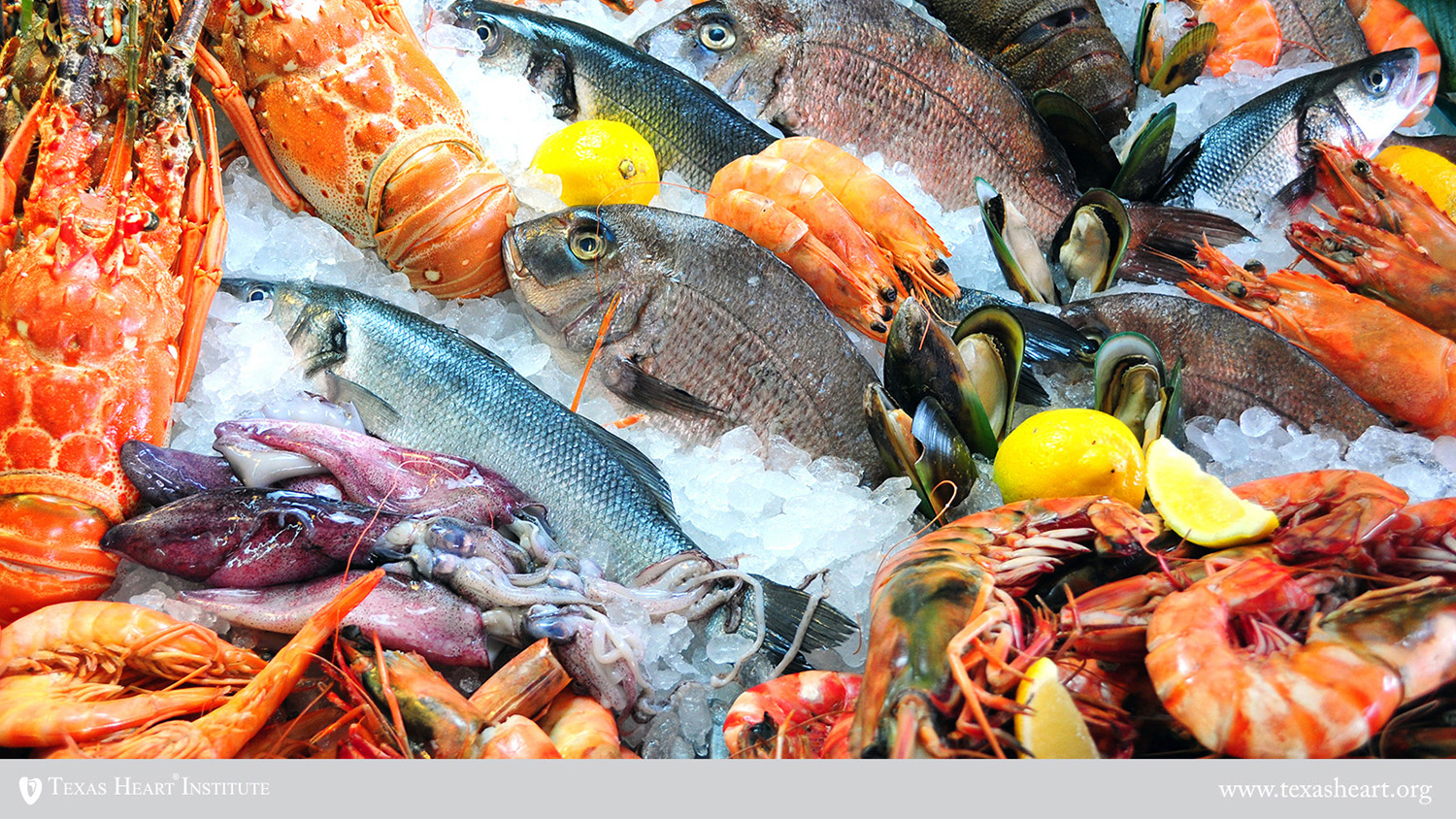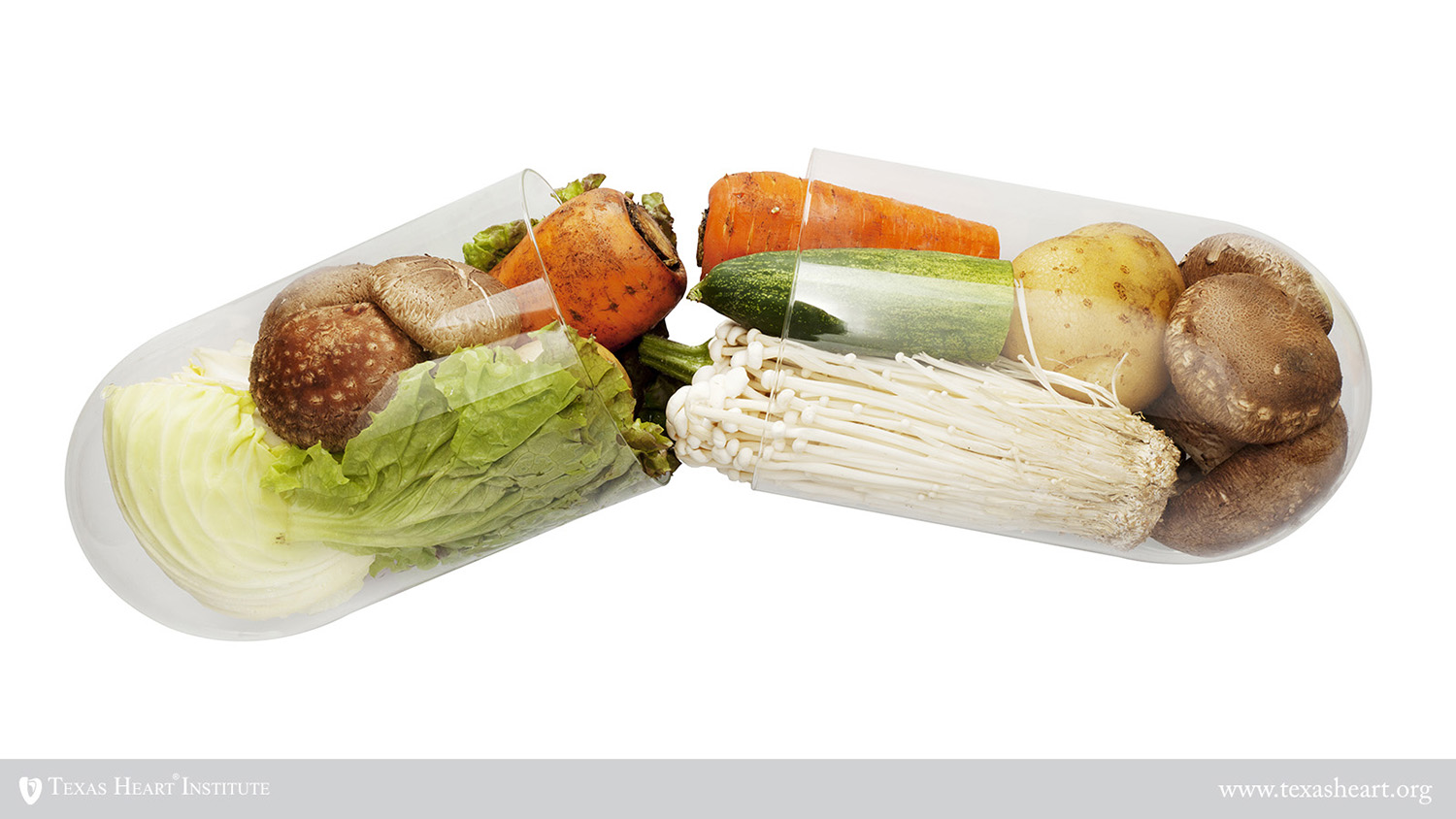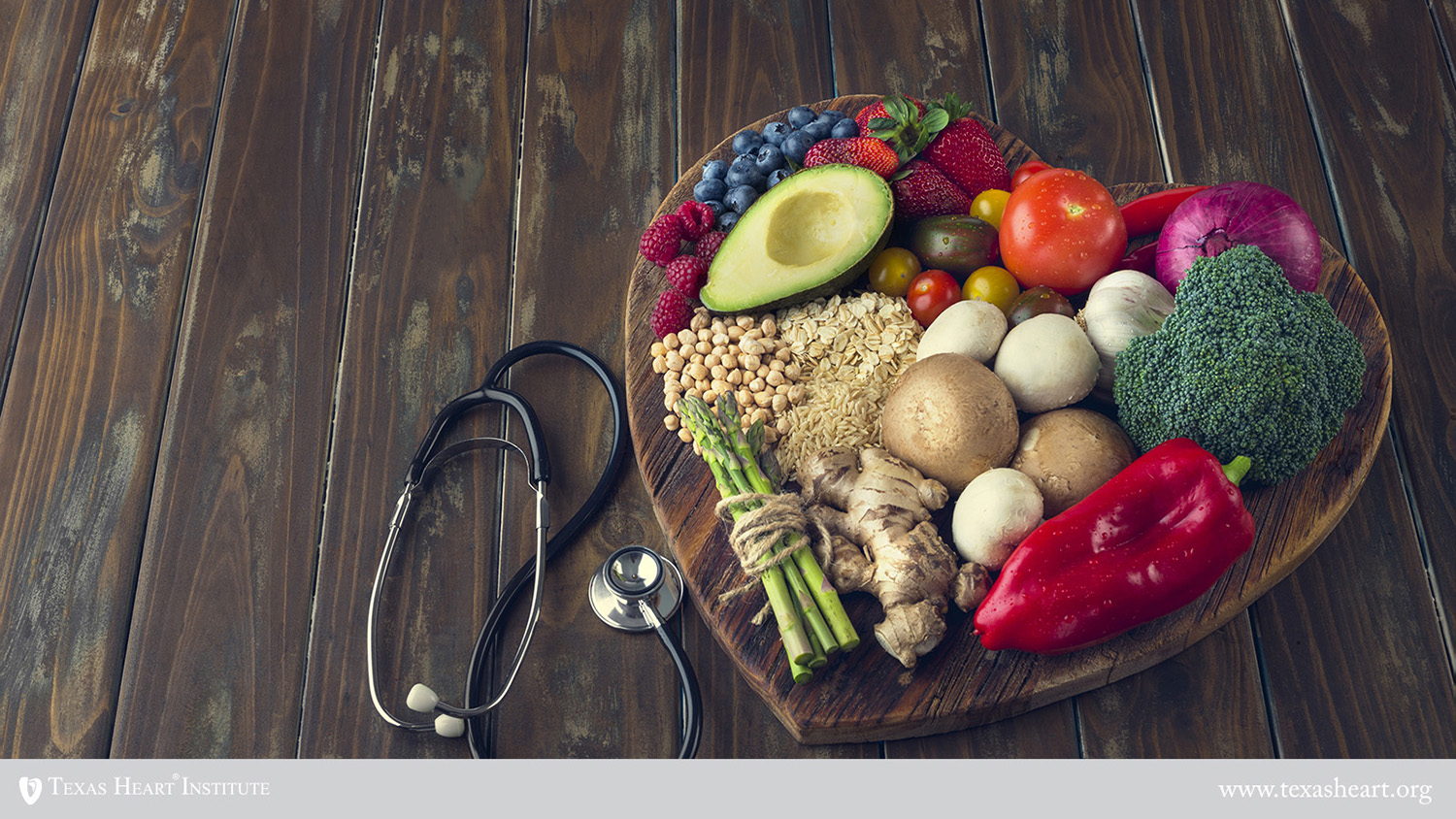Which diet should you consider trying? Which should you avoid?
Maybe you are one of the many Americans who are trying to lose weight and get healthy in 2021. With the numerous dieting options available, it is often difficult to determine where to start. There is no doubt that diet plays a major role in overall cardiovascular health, but each person’s goals and starting place are different. Whether you are trying to trim your waistline, control your blood pressure, or go vegan, the goal is to find a diet that is right and sustainable for you. Below, we provide a brief overview of some of the latest diet trends, their impact on overall health, and the key points to keep in mind when considering any new diet plan.

Mediterranean Diet
We discuss the Mediterranean diet first, and for good reason! The health benefits are numerous and range from improving cardiovascular health to preventing neurocognitive decline. For the third year in a row, the Mediterranean diet has been recognized as the best diet in several categories in the annual US News and World Report diet rankings and we could not agree more! Let’s delve into this diet further…
What is it: There is no single definition of the Mediterranean diet, but overall, the diet is rich in fruits, vegetables, whole grains, legumes, and healthy fats. The main sources of proteins are either plant-based or fish/poultry, with very little dairy or red meat.
Philosophy: It was noted in the mid-20th century that people in Crete, Greece, and in southern Italy had low rates of chronic disease and higher-than-average adult life expectancy despite having limited access to healthcare. It was believed that their diet, which was primarily plant-based, contributed to their improved health and longevity, and thus emerged the “Mediterranean” diet.
What are the typical foods: Plenty of fruits, vegetables, fish, poultry, olive oil, nuts, seeds, and legumes. Low amounts of dairy and red meat. Allows a moderate amount of wine.
Benefits: The Mediterranean diet has been shown in multiple trials to reduce the risk of cardiovascular disease and stroke. This diet has also been associated with lower risk of Parkinson’s disease, Alzheimer’s disease, and certain types of cancers (colorectal, prostate, oropharyngeal, and breast). People who adhered to the diet also had sustained weight loss and better glucose control.
Downsides: The Mediterranean diet does not emphasize portion sizes or specific amounts of certain foods, which could lead to excessive caloric intake.

Ornish Diet
The Ornish diet was developed by Dr. Dean Ornish with the goal of improving overall health, longevity, and quality of life. It was rated as one of the best diets in US News and World Report, especially with regard to cardiovascular outcomes.
What is it: It is a low-fat, low–refined-sugar, low–animal-protein diet. It is not just a diet but also emphasizes lifestyle modifications including exercise, stress management, and maintaining healthy personal relationships.
Philosophy: The Ornish diet was developed in 1977 by Dr. Dean Ornish, a clinical professor of medicine at UCSF. He theorized that diet, exercise, and healthy relationships all contribute to a patient’s overall health and longevity. He therefore took a holistic approach when designing a dietary plan, including exercise recommendations and lifestyle tips for patients to follow to improve their overall health.
What are the typical foods: It is a low-fat (<10% of daily caloric intake) and low–animal-product diet. It emphasizes the intake of vegetables, fruits, whole grains, and small amounts of nonfat dairy while avoiding simple carbohydrates, saturated fats, and the majority of meat-based proteins. There are multiple meal plans that range from more lenient guidelines based on your preferences, tastes, and level of commitment to more stringent, restrictive plans aimed at reversing heart disease.
Benefits: The Ornish diet is a well-rounded approach to both diet and lifestyle modifications that have been clinically proven in randomized controlled trials to lower the risk of cardiovascular disease in patients who adhere to one of the more restrictive versions of the plan. This diet has also been associated with modest weight loss and reductions in chest pain in patients with coronary artery disease.
Downsides: If you are on one of the stricter meal plans designed to reverse heart disease, the diet is restrictive and can be difficult to sustain.

DASH Diet
The DASH diet has been recommended for many patients with underlying hypertension or cardiovascular disease. While it has fewer clinically proven benefits than the Mediterranean diet, it has more specific instructions for serving sizes and types of foods, which can make it easier to follow.
What is it: Originally developed to help with blood pressure control, the diet consists of 4-5 servings of fruit, 4-5 servings of vegetables, and 2-3 servings of low-fat dairy per day, with <25% dietary intake from fat.
Philosophy: The diet was initially developed to test the effects of dietary patterns on lowering blood pressure. Patients were randomly assigned to eat the typical American diet, the American diet plus more fruits and vegetables, or the DASH diet. Compared with the typical American diet, the DASH diet is in lower in sodium and richer in nutrients such as potassium, magnesium, calcium, and fiber, which are associated with lower blood pressure. In the study, the DASH diet was shown to lower blood pressure as effectively as taking medication for stage 1 hypertension.
What are the typical foods: The diet is rich in fruits, vegetables, low-fat milk, whole grains, fish, poultry, beans, and nuts. It emphasizes reducing intake of sodium, beverages with added sugar, saturated fat, and red meat. The plan is divided into 1600-, 2000-, and 2600-calorie options and provides portion sizes for each of these calorie plans.
Benefits: The DASH diet has been shown to lower blood pressure in patients with hypertension, decrease serum uric acid levels (which may aid in preventing gout flareups), and potentially prevent the development of diabetes.
Downsides: The list of foods that are part of the DASH diet is not comprehensive and may be misleading. For example, breakfast cereal is listed as a grain, but many cereals are high in sugar and have little nutritional benefit. The diet will need to be modified for those who are lactose-intolerant, and it may cause bloating due to increased fiber intake.
Intermittent Fasting
Intermittent fasting is quickly becoming a major dietary trend in the US, and numerous health benefits have been found in animal models and observational human studies. While no large randomized controlled trials have been performed yet, we are encouraged by the results thus far.
What is it: It is a caloric-restriction diet where a person limits themselves to daily time-restricted feedings (ie, 7am-3pm), fasts every other day, or, two days a week, limits themselves to one moderate-sized meal (the so-called “5 and 2” plan).
Philosophy: Intermittent fasting allows a person’s body to transition from sugar (glucose) to ketone bodies—which are made from stored fat—as its main source of energy. This transition process is called ketosis. During periods of prolonged fasting (>8 hours), the body uses up all its glycogen (the form in which the body stores glucose) and begins converting fat into ketone bodies to serve as its primary source of energy instead. The cells will continue to use the ketone bodies to generate energy until you consume carbohydrates again, at which point the state of ketosis is broken and the body switches back to glucose as its main energy source. This switching from glycogen breakdown to ketogenesis is thought to have many benefits for the body as detailed below.
What are the typical foods: The diet does not specify food types; however, consuming plenty of fruit, vegetables, lean proteins, and whole grains during non-fasting periods is encouraged.
Benefits: In animal studies, intermittent fasting has been shown to decrease inflammation, improve glucose regulation, and increase stress resistance. Ketone bodies (compounds produced when you metabolize fat) have been shown to regulate the expression and activity of many proteins that are known to influence health and aging. Specifically, they have been linked to increased expression of antioxidant defenses, increased DNA repair, and down-regulation of inflammation. This has major implications for the benefits of intermittent fasting in people with cardiovascular disease, cancer autoimmune conditions, neurocognitive disease, and diabetes, among others. In observational studies, people doing intermittent fasting reported improvements in overall cognition and memory, weight loss, and better control of their underlying type 2 diabetes.
Downsides: Intermittent fasting can be difficult to maintain, especially in the early stages, when people may feel fatigued. It is also important that one’s meals be well-rounded to ensure adequate intake of necessary nutrients, vitamins, and minerals.

The Ketogenic (“Keto”) Diet
The ketogenic diet has become very popular in the US. While it is a restrictive dietary plan, many people have seen significant weight loss results. However, the effect of the diet on overall health is unknown, and we are concerned about the impact of a high-fat, high-protein diet on cardiovascular disease risk. For short-term purposes, however, it may be an effective means to lose unwanted weight.
What is it: A low-carbohydrate, high-protein, and high-fat diet.
Philosophy: As with intermittent fasting, the goal of the keto diet is to force the body into ketosis, in which it begins to use fatty acids instead of glucose as its major source of energy. A person typically reaches a state of ketosis (fatty acid metabolism) over the course of 2-4 days of eating fewer than 20-50 g of carbohydrates per day.
What are the typical foods: It is a diet rich in proteins and fats. The meal plans typically include plenty of meats, cheeses, fish, nuts, butters, oils, and fibrous vegetables while avoiding carbohydrates (less than 20-50 g/day).
Benefits: The keto diet has been associated with faster weight loss than some of the low-fat diets; however, this difference disappears over time. Also, because this diet is low in carbohydrates, it is associated with better blood sugar control in people with type 2 diabetes.
Downsides: It is a very restrictive diet and difficult to sustain. It can lead to fatigue, nausea, constipation, and insomnia. Because of the high fat intake, there is concern about the effects of the diet on cholesterol levels and overall cardiovascular health; however, more studies are needed to determine the cardiovascular impact of this diet plan. The keto diet should be avoided in patients with kidney disease, as the high protein intake may worsen kidney function.

The Paleolithic Diet
Like the ketogenic diet, the paleolithic diet has become a big dietary trend. Those who have gone “paleo” advocate for eating only those foods that can be attained through “hunting and gathering” while avoiding those that are farmed or processed. Overall, it is a very restrictive diet that has been effective in helping people lose weight, but it is difficult to sustain. We are also concerned that this diet cuts out too many food groups, which may have deleterious effects on one’s overall health. Similar to the keto diet, however, it may be okay in the short term for weight loss.
What is it: Often referred to as a the “Caveman diet,” the paleo diet focuses on eating foods that humans ate as “hunter-gatherers” back in the paleolithic era, which took place between 2.5 million to 10,000 years ago.
Philosophy: The theory behind the paleo diet is that while our diet has evolved over the years with the advent of farming and processed foods, our genetics and anatomy have not. Instead, our bodies are built to digest and make use of the foods that are acquired through “hunting and gathering” and are ill-equipped to deal with the typical American diet today.
What are the typical foods: It is a diet rich in proteins, moderate in fat, and low-to-moderate in carbohydrate intake while avoiding refined sugars, high-glycemic-index carbohydrates, and added salt. The meal plans typically include plenty of meats, fish, fruits, vegetables, and seeds while avoiding foods cultivated through agriculture, including dairy, grains, and legumes.
Benefits: The diet has been associated with weight loss, decreased blood pressure, increased insulin sensitivity (resulting in better blood-sugar control), and improved cholesterol levels in limited studies.
Downsides: The diet is restrictive and fairly expensive to sustain. Recent studies have shown that people who follow the paleo diet have increased levels of trimethylamine-n-oxide (TMAO), a compound produced in the gut that is associated with an increased risk of heart disease. It has also been associated with a lower concentration of “healthy gut bacteria,” which may be linked to other chronic illnesses over the long term.

Vegan Diet
The vegan diet is a full plant-based diet that is devoid of all animal products. While plant-based eating has health benefits, people on this diet run the risk of missing essential vitamins and minerals.
What is it: The vegan diet emphasizes the consumption of plant-based protein sources, fruits, vegetables, and whole grains while eliminating meats and other animal products such as dairy and eggs.
Philosophy: People may follow the diet because of beliefs about animal mistreatment, environmental concerns, or as a way to lose weight.
What are the typical foods: Plenty of fruits, vegetables, grains, legumes, nuts, and non-animal based protein sources (peanut butter, chickpeas, tofu, potatoes, plant-based milk).
Benefits: Studies have shown that vegans have a lower body mass index (BMI), better cholesterol levels, and a lower incidence of heart disease than people with meat-eating diets.
Downsides: The vegan diet can be very difficult to follow, and people may be missing essential nutrients in their diet such as B12 and choline. In addition, a vegan diet still allows many processed foods, including those with high amounts of refined sugar, which provide little nutritional value and can lead to weight gain and worsen insulin resistance.
Vegetarian Diet
Similar to vegans, vegetarians follow a plant-based eating plan and avoid eating meat. The vegetarian diet, however, is less restrictive in that it allows the consumption of animal-based products such as dairy and eggs. Again, while there are many benefits of plant-based eating, there is a risk of missing essential vitamins and minerals.
What is it: A diet that avoids any animal meat, including red meat, poultry, and fish, while still allowing the consumption of animal-based products such as eggs and dairy.
Philosophy: Like the vegan diet, the vegetarian diet relies mainly on plant-based protein sources in addition to dairy and eggs. Again, people may choose to be vegetarian because of concern about animal mistreatment, environmental concerns, or as a strategy to lose weight.
What are the typical foods: Plenty of fruits, vegetables, dairy, eggs, and whole grains. Avoids any type of meat products.
Benefits: Numerous studies have associated the vegetarian diet with lower risks of heart disease, type 2 diabetes, and certain types of cancer.
Downsides: Plant-based diets can be associated with a risk of inadequate protein, vitamin, and mineral intake.
Whole 30 Eating Plan
The whole 30 eating plan has become popular among people who believe that “clean eating” will improve their overall health. Specifically, whole 30 is less of a diet and more of an eating plan aimed at discovering whether certain food groups are contributing to unwanted conditions or side effects. The goal is to eliminate several types of food for 30 days and then add them back into your diet one at a time to monitor how your body reacts to them. Not surprisingly, the dietary plan is very restrictive; however, it may help people discover food sensitivities and allergies.
What is it: It begins with a 30-day nutrition challenge aimed at “clean eating,” which involves eliminating all processed and packaged foods, alcohol, grains, starchy vegetables, sugars, legumes, lentils, and dairy products. These foods are then added back into one’s diet one at a time to see if they cause any adverse effects.
Philosophy: The theory behind the whole 30 is that diet plays a major role in a person’s physical and mental health and therefore can be a major contributor to many conditions, from acne to irritable bowel syndrome. By eliminating certain food groups and then slowly adding them back, you may be able to identify your triggers so that you can avoid them in the future and, thus, feel better on a day-to-day basis.
What are the typical foods: The 30-day portion of the diet is rich in “whole foods,” including fresh fruits, vegetables, eggs, lean proteins, healthy fats (oils, avocados), nuts, and nut butters, while avoiding all packaged food, alcohol, sugars, dairy, legumes, and starchy vegetables.
Benefits: The diet may help people identify uncomfortable symptoms triggered by certain foods. It has also been associated with weight loss over the course of the 30 days.
Downsides: Whole 30 is very restrictive by design and can be expensive to maintain. It is also not a diet or weight loss plan.

mHCG Diet
The HCG diet has fallen out of favor because it is potentially dangerous for people to follow. The diet consists of severe caloric restriction coupled with injections of a hormone called human chorionic gonadotropin (HCG), which were thought to boost metabolism. Studies showed that the weight loss associated with this diet was only due to the caloric restriction and had nothing to do with the HCG. Furthermore, taking HCG has been associated with an increased risk of blood clots and other unwanted side effects; therefore, we strongly advise people to stay clear of this diet.
What is it: The diet consisted of severe caloric restriction (500-800 calories per day) coupled with HCG injections to “sustain” weight loss. The diet was typically divided into 3 phases:
-
- Loading phase: Start taking HCG and eat plenty of high-fat, high-calorie foods for 2 days.
- Weight loss phase: Continue taking HCG and eat only 500 calories per day (only 2 meals per day) for 3-6 weeks.
- Maintenance phase: Stop taking HCG and gradually increase caloric intake but avoid sugar for an additional 3 weeks.
Philosophy: HCG was thought to boost metabolism and make people less hungry despite severe caloric restrictions. This has been disproved in multiple studies, and this diet has now fallen out of favor because of the risks and lack of benefits associated with HCG injections.
What are the typical foods: The diet mainly focused on severe caloric restriction (500-800 calories per day) rather than the types of foods consumed, except that it emphasized avoiding refined sugar.
Benefits: This diet appears to have no particular benefits with regard to weight loss.
Downsides: There was no difference in weight loss between HCG and a placebo in patients who were placed on the same caloric restriction, suggesting that the severe caloric restriction alone was responsible for the overall weight loss. The diet has been associated with increased fatigue, depression, and edema as well as the enlargement or swelling of breast tissue in men and boys (“gynecomastia”). HCG has also been associated with increased risk of blood clots.
Detoxes/Cleanses
While detoxes and cleanses have become a big fad, they provide little benefit and pose significant risk to those who choose to follow them. Unfortunately, drinking only juice or taking colon-cleansing agents does not rid the body of toxins, as commonly advertised. They can, however, lead to dehydration and electrolyte imbalances that are potentially life-threatening. For these reasons, we strongly recommend against these cleanses and detox programs.
What is it: A variety of different “detoxification” diets or “cleanses” are advertised as a means of “removing toxins from the body.” The programs may involve drinking only juices, eating only certain foods, using dietary supplements, cleansing the colon with products such as enemas, or using herbs.
Philosophy: While these methods are advertised as a means of “cleansing” or “detoxifying” the body and eliminating unhealthy toxins, there is very little research to support these claims. The FDA and FTC have taken several actions against companies selling detox/cleansing products because of their illegal or potentially harmful ingredients, misleading marketing with false claims that they can cure certain conditions, and the marketing of products for unapproved uses.
What are the typical foods: The types of cleanses variously involve drinking only juices, using certain herbs, eating specific foods, taking supplements, or using products to cleanse the colon. These diets have no significant data to support their claims of ridding the body of toxins and can have serious adverse effects.
Benefits: Certain fasting techniques can result in weight loss.
Downsides: These cleanses are potentially dangerous and harmful to one’s health and are therefore discouraged. Many of the juices are unpasteurized and can cause people to become sick. Certain other juices are high in oxalate and can therefore cause serious kidney damage. Supplements are unregulated and can be potentially harmful. Colon cleansers can cause dehydration and electrolyte abnormalities that could be life-threatening if abused. The cleanses are not recommended and can be unsafe to perform.

THE BIG PICTURE
Macronutrients and Lifestyle Matter
There are many diet options out there, but perhaps what truly matters are the macronutrients (carbohydrates, proteins, fats) you choose to eat. Most diets that lead to effective weight loss and provide significant health benefits are those that emphasize the intake of fruits, vegetables, lean proteins, and unsaturated fats while limiting the intake of simple sugars and saturated/trans fats. When choosing a diet that will work for you, remembering to follow these principles will help you attain the health benefits you are looking for:
-
Eat more veggies
Whether you are following the ketogenic diet, adhering to the Mediterranean lifestyle, or on a paleo kick, all diets emphasize the intake of vegetables, and for very good reason. Vegetables are loaded with essential nutrients, vitamins, and minerals and can fill you up without a significant number of calories. Studies have shown that diets that emphasize the intake of vegetables improve people’s cardiovascular outcomes, insulin sensitivity, and gut health and may be protective against neurocognitive decline and certain types of cancers. No matter which diet you choose to follow, eating plenty of vegetables per day is a must!
-
Cut back on refined sugars
Low-carbohydrate diets have been proven to aid in weight loss; however, not all carbohydrates are created equal. For example, oatmeal has been associated with lowering cholesterol, whereas white bread has very little nutritional value. Rather than eliminating all carbohydrates, one should focus on cutting out refined sugars and simple carbohydrates that provide little to no nutritional benefit but can lead to weight gain, insulin resistance, and increased risk of diabetes, stroke, and cardiovascular diseases.
-
Aim for whole foods over processed foods
Whole foods (fruits, vegetables, beans, nuts, whole grains, seafood, etc.) have been shown to be better for one’s overall health than processed foods. This is because processed foods typically have less fiber, more salt, more saturated fat, and more refined sugars than whole foods. People who eat a diet rich in processed food tend to eat more calories on average—and therefore are more prone to weight gain—than those who eat mainly whole foods. To try to slim the waistline and improve overall health, cutting back on highly processed foods is a good way to start.
-
Exercise goes a long way
There is no debate that successful weight loss is mainly driven by dietary measures; however, exercise is key to a healthy lifestyle. Exercise has been linked to numerous health benefits, including decreasing the risk of cardiovascular disease, preventing neurocognitive decline, improving mental health, and lowering the risk of certain types of cancer (colon, breast, lung). It is also a key aspect of helping a person lose weight and keep it off. Even if you are not aiming to lose weight, doing 150 minutes of aerobic exercise a week will do wonders for your overall cardiovascular health.
-
Sustainability is key
Choose a diet that is sustainable for you. If it is too restrictive or requires you to cut out too many food options you enjoy, it will be difficult if not impossible to maintain. Remember that a few cheats here and there are okay, and sometimes you just need that piece of cake or bowl of ice cream. Focus on celebrating your successes and your decision to make healthier choices, rather than punishing yourself for not adhering to every dietary restriction.
Until Next Time!

Thank you to Heather Pemberton, MD and Jackie Ferrufino for their assistance in this issue of Straight Talk.









